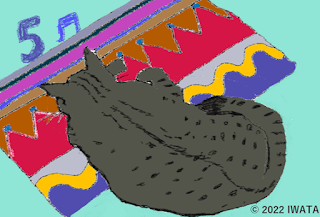注目
- リンクを取得
- ×
- メール
- 他のアプリ
abstract: The Role of Commodity Value in Inconvertible Credit Money: A Contemporary Unoist Perspective
In response to economic downturns during the 2000s, monetary policy based on the exogenous money supply views, aligned with monetarist policies, was attempted. However, subsequently, renewed interest has emerged in endogenous money supply theories. This resurgence is evident in publications supporting endogenous money supply theories and growing interest in Modern Monetary Theory (MMT).
Despite broad agreement on money supply being endogenous to demand-driven debt issuance, variances exist within these theories. Critics of MMT argue against its inclusion of exogenous elements accepting the discretionary money injections by the government from outside the market. These critics argue for a more endogenous approach, where money issuance also needs to be backed by sound credit mechanisms. This perspective is common to their historical predecessor, the Banking School, whose Real Bill Doctrine emphasized commodity trading in credit money issuance.
Expanding on this, Marxian political economy defines “endogenous” to mean that money inherently derives from commodity value, countering the exogenous perspective of externally introduced money.
Contemporary Unoist Marxian economists have further refined this concept by classifying commodity money into two categories: physical money, such as precious metals, and credit money, which is issued as a claim on commodity value through banking systems. Unlike earlier Marxian views that recognized solely physical money, the contemporary Unoist scholars contend that credit money, backed by commodity value, is endogenously issued in response to demand from the borrowers with commodity value. This classification underscores a sophisticated understanding of money’s origins and its operational dynamics in modern economies.
Our presentation categorizes monetary theories into four types based on their approach to supply and logical genesis of money.
1. Exogenous in both supply and logical generation: including exogenous money supply theory, such as monetarism and the classical quantity theory of money.
2. Exogenous in supply but endogenous in logical generation: such as metallism, and earlier Marxian economics, which is one of the commodity theories of money.
3. Endogenous in supply but exogenous in logical generation: typical endogenous money supply theories that regard money as having no intrinsic commodity value.
4. Endogenous in both supply and logical generation: epitomized by the contemporary Unoist approach, a modern type of commodity theory of money.
Finally, we highlight the differences between the contemporary Unoist approach and other endogenous money supply theories, focusing on two principal areas of contention.
First, we explore the commodity basis of inconvertible bank money. The banking system, with the central bank positioned at its apex, is counterbalanced by the assets of non-financial debtors, which consist of commodities or the capacity to produce commodities. Understanding these dynamics requires a comprehensive analysis of the entire banking operation.
Second, we explore how inconvertible credit money is logically derived within the framework of value-form theory. This derivation is made possible by introducing the concept of a claim on a set of commodities. Informed by contemporary Unoist studies, our approach demonstrates that modern credit money is fundamentally based on commodity values. This basis distinguishes credit money from fiat money, which lacks inherent commodity value.
- リンクを取得
- ×
- メール
- 他のアプリ


コメント
コメントを投稿